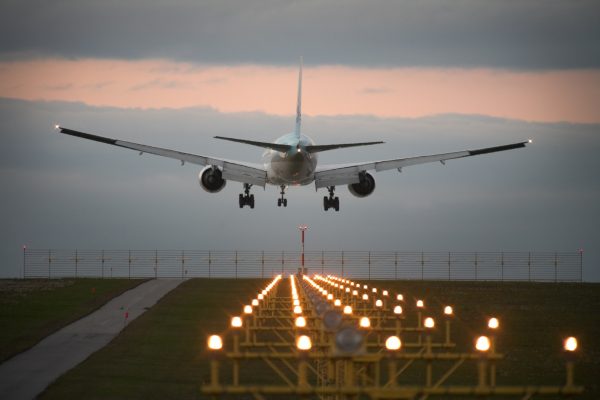
As the Taliban seek to engage with the international community, the government announced plans to expand exports via existing air corridors as well as develop new ones. While this is promising, the current air corridor program is nascent and real progress will not be achieved until the Taliban and the West engage on differences, seek consensus, and achieve compromise. For the international community, it is not just a matter of whether to engage with the Taliban but more a question of how and on what terms. Simply expanding air corridors and expecting the international community to respond in kind would be wishful thinking. There is a lot more work that needs to be done.
Last month, Nooruddin Azizi, the Taliban’s minister of industry and commerce, stated that Afghanistan’s export volume to neighboring countries had increased compared to its import volume and that the “ministry would use every means to reduce and control tariffs.” Azizi also noted how Afghanistan’s “air corridors are open to China and we are trying to open them to other countries as well.”
To gauge the importance of the air corridor for Afghanistan’s economy, one will need to look at Afghanistan’s geography. For landlocked Afghanistan, the inability to conduct trade beyond the immediate neighborhood without transiting third countries is a significant impediment to the country’s trade. Pakistan is Afghanistan’s largest trading partner, while Afghanistan is Pakistan’s second-largest export market. Most, if not all, of Afghanistan’s goods exports are transported by truck.
However, Pakistan has always been an uneasy neighbor and trading partner. The Torkham border crossing point has been a bone of contention between the two countries, with occasional abrupt closures and exchanges of fire. The Taliban government recently re-opened the Afghan checkpoint at the crossing following disputes between the customs authorities. This left many goods stranded, raising costs and adding to transport delays.
Also looking at the country’s trading pattern, Afghanistan is extremely dependent on international imports more so than exports. It imports more than 10 times what it exports. Afghanistan’s exports mostly consist of lower-value goods such as carpets, fresh and dry fruits, saffron, and pine nuts. Despite this, while air corridors may be more cost-effective for high-value products, they can help the country overcome its geographic barriers and not rely on transiting third countries to reach new markets.
Looking back, from 2017 Afghanistan began opening up and testing various air corridors with India (to overcome political difficulties with Pakistan), along with China, Russia, Turkey, Saudi Arabia, the EU, Kazakhstan, the United Arab Emirates, and others. However, in the past year, the use of Afghan airspace by international aircraft (both passenger and cargo) was reportedly down by 80 percent. According to Imamuddin Varimach, former deputy minister of transport and aviation in Afghanistan, “currently, the international airlines do not consider the airspace of Afghanistan safe, so they have changed all their routes.’”
From a sanctions compliance perspective, exporting goods out of Afghanistan remains problematic. This has de-incentivized private investment and heightened risk. There are a few reasons why. First, we need to look at where Afghanistan stands in the international community. At present no foreign nation has officially recognized the Taliban government, although China, Russia, Pakistan, and Turkmenistan have accredited Taliban diplomats.
Another reason is the absence of a functioning formal banking system. This means that international banks are reluctant to move money into Afghanistan because of sanctions compliance concerns. This has forced local businesses to rely increasingly on traditional Hawala informal payments for international transactions. With a preference for formal banking due to anti-money laundering and combatting the financing of terrorism (AML/CFT) risks associated with Hawala payments, many international firms don’t have a known or trusted counterpart in the country. As a result of these concerns, many foreign market participants are unwilling to engage with Afghan companies, and this has stumped demand for international exports.
The current air corridor program in Afghanistan is still nascent. While air corridors are useful for any landlocked country to have in its multimodal transport arsenal, the lack of infrastructure, safety, and security can impose additional transport costs. For instance, the lack of machinery for packaging goods and the absence of food safety labs for quality assurance checks are some of the key impediments to increasing exports.
The Taliban’s attempt to reconnect Afghanistan to foreign markets by simply increasing exports via air transport is ambitious. History is replete with examples that have shown us time and time again that successful connectivity does not simply arise from building physical infrastructure or even by expanding air corridors alone. It requires legal and regulatory alignment, along with the development of appropriate skills to enable benefits to be spread. Rebuilding an economy in a globalized world involves many players. The current economic set-up in Afghanistan does not make it conducive to trade with markets beyond its bordering regions. Given this, merely betting on improving logistics to expand exports is inadequate.
Afghanistan Seeks New Air Corridors
Source: Frappler

0 Comments